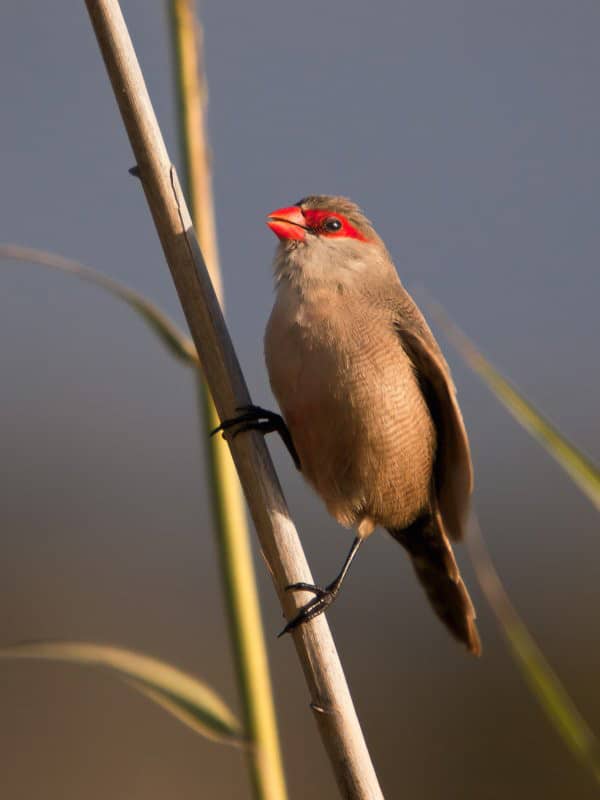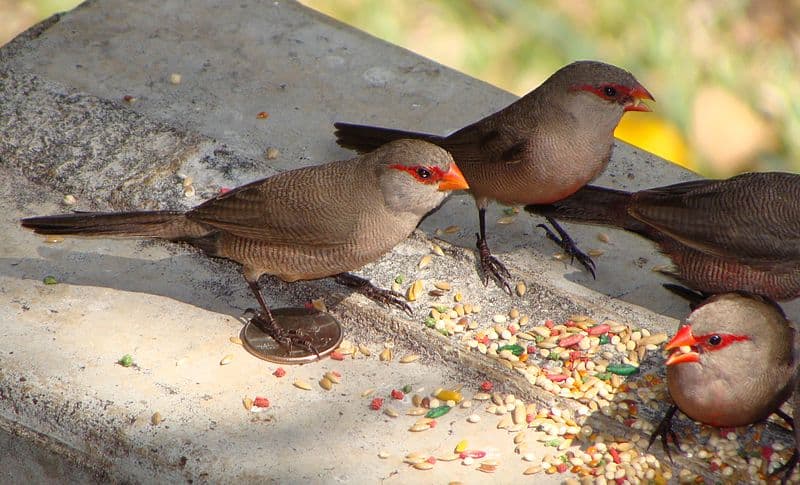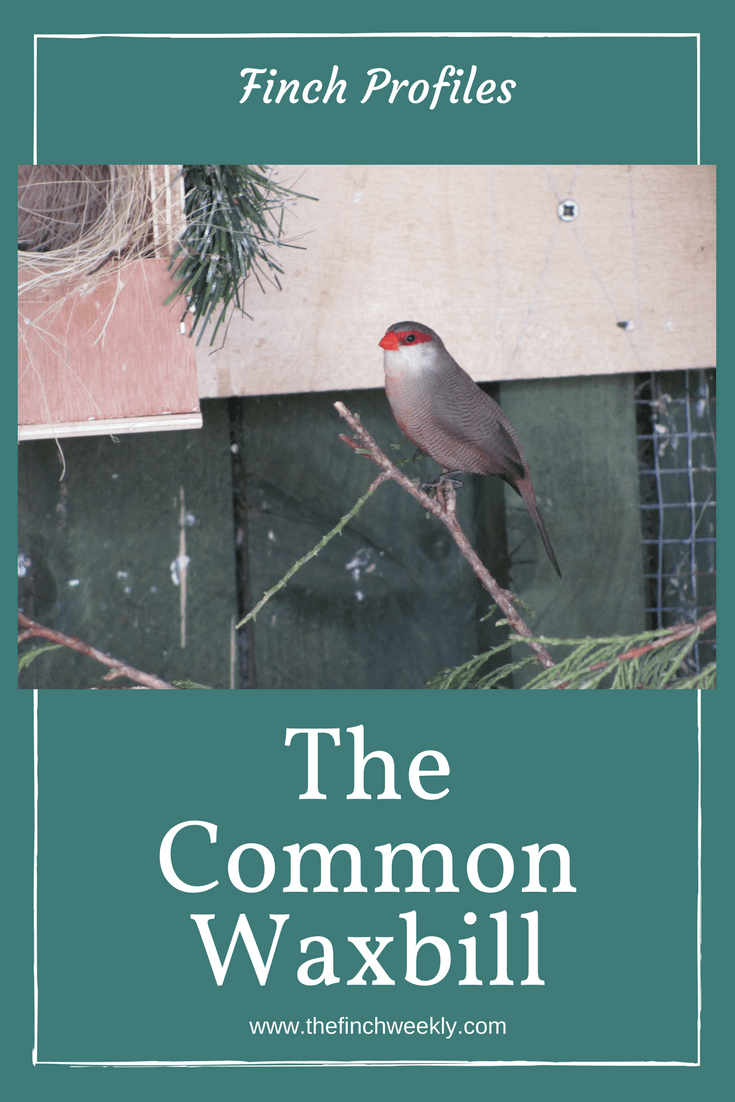In my opinion, there’s nothing common about the common waxbill and that’s one of the reasons I tend to call them by their other name, the St Helena waxbill. These beautiful little birds with their bright red beak, red Zorro style eye mask and subtle barring on their brown feathers are a truly lovely little bird and make a great member of a mixed finch flight.
Basics
The common waxbill (Estrilda astrild) is a typical small waxbill finch, 11-13cm in length with a wingspan of 12-14cm and weighing around 7-10 grams. They have a slender body shape with slightly rounded wings and a tail that graduates in size to the point. The red colour of the beak is what gives the group their names – it is the colour of sealing wax once used on letters. Their body looks brown at first glimpse but the underside has a pink blush to it and a red stripe along the belly. Tail and vent are dark and sexing the birds can be difficult apart from the females have some less red on the belly.

In the wild, these birds live up to their name as common because there are some 17 subspecies covering much of Africa to the south of the Sahara, particularly in East, Central and Southern Africa, save the desert areas and those of densest forest. They are seen mostly in the west of Africa in Sierra Leone, Liberia and the Ivory Coast. Throughout their range, they generally live in open country with rank vegetation and long grass, near water or marshes with reed. They will also adapt to human habitation areas such as gardens, farmland and parks.
Outside breeding season, these birds typically live in large flocks and roost together in smaller flocks at night, usually in reed beds, thick bushes or papyrus swamps. They are parasitized by the Pin-tailed Whydah when nesting in the wild.
In captivity
Common waxbills can be quite hardy but do need protection in the coldest months of the year and if breeding during the winter, the hens are prone to becoming egg bound if not sufficiently heated. They can live happily with other species though they can cross breed with closely related waxbill species however, breeders recommend a single pair of them to an enclosure unless it is a very large aviary. They tend to breed more successfully in a flight than in a cage unless a very large one and they prefer a well-planted aviary.

These waxbills can easily leave their nest and chicks if disturbed, so nest checked aren’t advisable. Four to six eggs are a typical clutch that both parents incubate and the chicks hatch between 11-13 days after laying.
When the chicks hatch, they will have white nodules at the bottom of the beak that acts as a guide for the parents where the food needs to be deposited in the darkness of the nest. Egg food and soaked seed will be fed to the young but they don’t seem to have the need for live food that some other waxbill species do.
The chicks fledge at 21 days approximately and will remain with their parents, receiving food until they are around five weeks old. They will undergo their first moult at around two months old.
